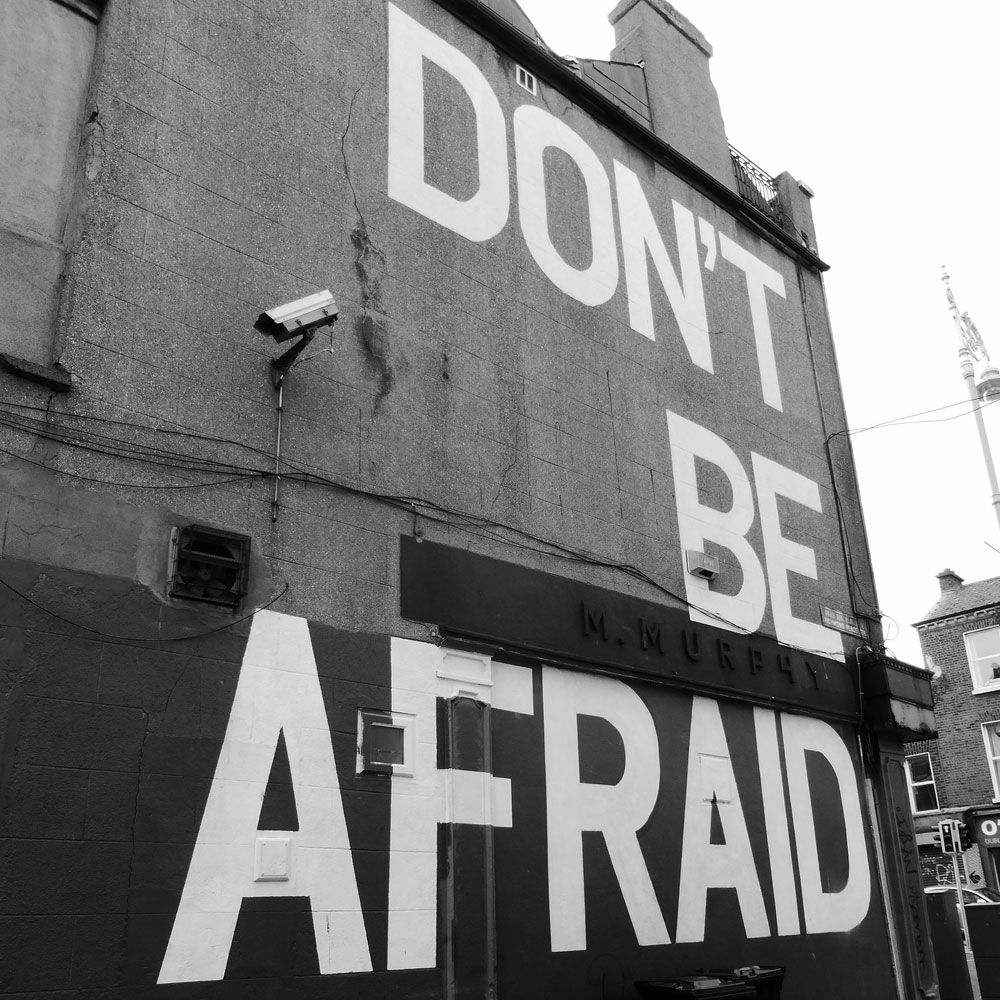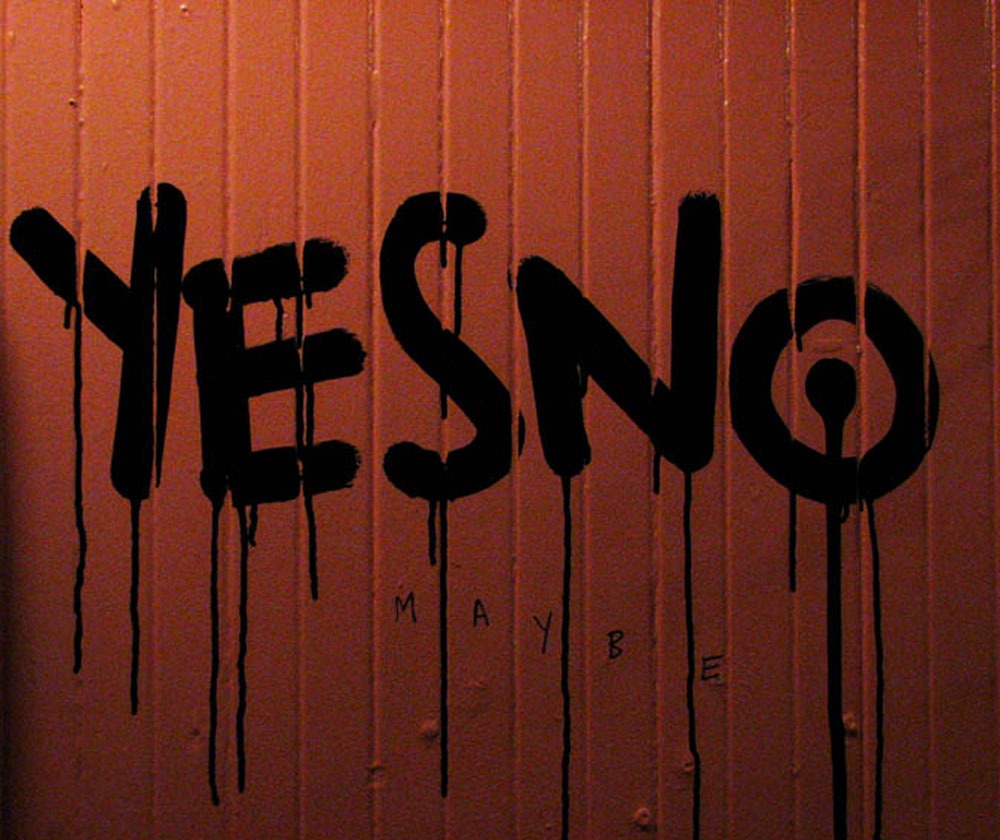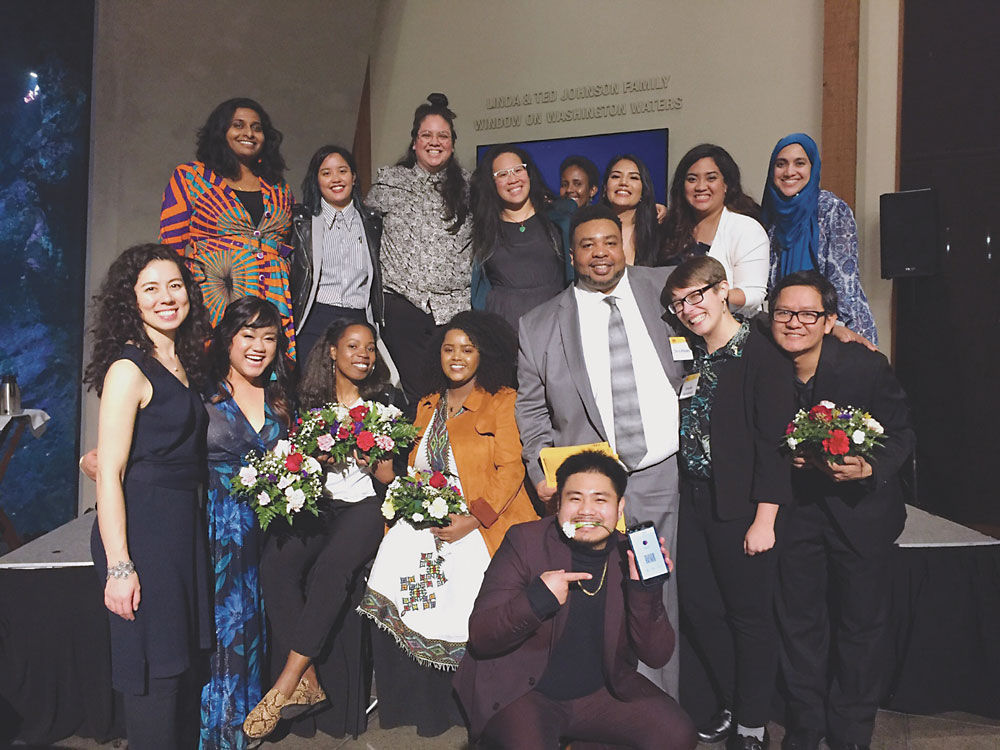
This article comes from the winter 2020 edition of the Nonprofit Quarterly.
Transparency rules are embedded in the governance structures of the U.S. social sector, because nonprofits are tax-exempt organizations with missions of public social trust. Compliance with federal financial transparency and public accountability stipulations is a threshold requirement for U.S. nonprofits.1 Nonprofits operating in good faith strive to meet this legal and financial framework by acting and communicating honestly about the nature of their work and how they do the work.
But how might nonprofits practice transparency toward their primary internal constituency—i.e., the staff who daily carry out their missions? What might be some of their thinking around their obligations to their staff?
These questions have particular poignancy currently, as many nonprofits are facing existential challenges, navigating the pandemic, the heightened racial justice crisis, climate emergency, and the economic free fall all at the same time. Which nonprofits are looking out for the workers on the front lines of social mission work?
Knowing that organizations exist whose practices include centering worker interests, I sought to lift up their internal practices in order to demonstrate what is possible in terms of transparency and staff support at a time of crisis in the nonprofit world. I took a qualitative case studies approach, interviewing a small, representative group of three executive directors who were willing to put their stories “on record.”
The chief executives I interviewed work in human services and community development in the border region of San Diego County, worker advocacy in the Inland Empire region of Southern California, and capacity building in the greater Seattle area. Their stories, which include the personal journeys that led to their current positions and the organizational perspectives of their staff, provide intimate access to the framing for each organization’s programs and internal culture.
The forthrightness with which they shared with me the institutional push to do right by their staff is itself a model of transparency. The descriptions, by no means exhaustive of all that their organizations do, represent the executives’ viewpoints and provide snapshots of how these organizations are acting to support their staff during these challenging times.
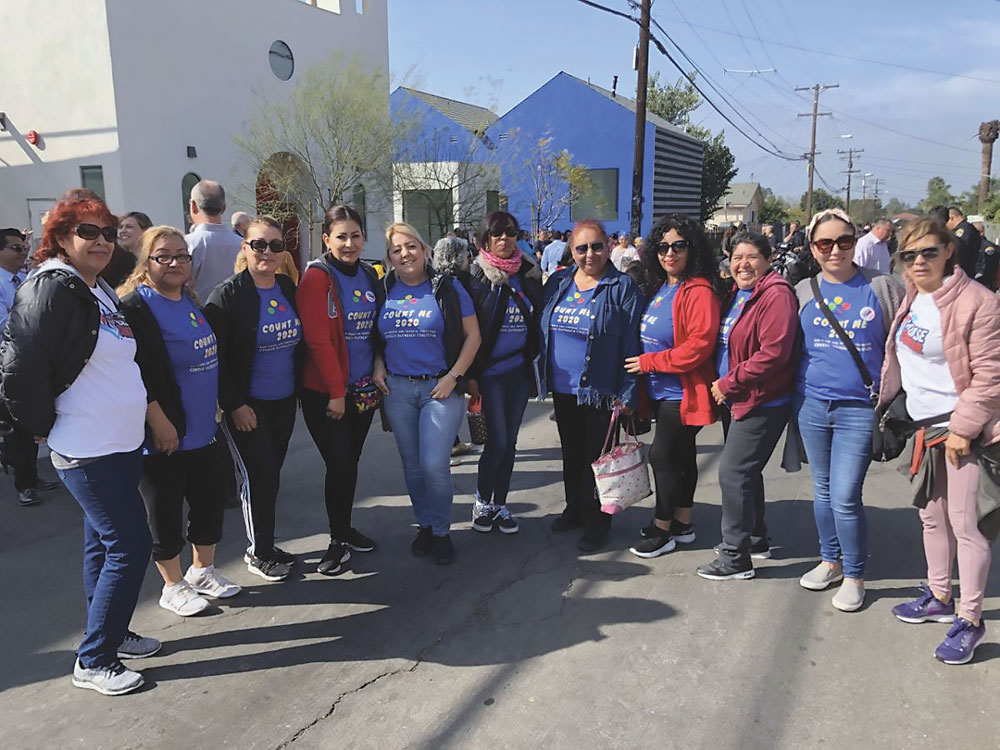
CASE STUDY 1: Lisa Cuestas, Casa Familiar, San Ysidro, California
Personal Journey
“I have worked for twenty years at Casa Familiar,” says CEO Lisa Cuestas. “I came originally as a volunteer. I had just moved to San Ysidro from Tucson, Arizona, with my husband, who took an Enterprise Rose Fellowship, and Casa was the LIHTC [Low-Income Housing Tax Credit] partner, the primary federal funding vehicle for subsidized rental housing. I didn’t know anyone, and Casa became an entry point. I became a youth coordinator for the teen center. I went through seven different roles before becoming the CEO. I was the COO for the previous CEO for seven years.”
Living Rooms at the Border: Representing Casa’s Mission
“It was challenging when I became the CEO, because we were cash poor after acquiring properties, and we were stabilizing through LIHTC projects. Living Rooms at the Border, a mixed-use [residential and commercial] project, was in planning for eighteen years and our first NMTC [New Market Tax Credit, another federal funding vehicle] project. We rescued a historic church, [and] incorporated a classroom space with UCSD [University of California, San Diego], to house some service spaces and ten housing units. It’s also a social enterprise training site. We secured financing because we identified a steady stream of revenue for the services.
“Casa was building projects again after not doing development for a while. We had board support and a good consultant. We wanted the Living Rooms project to be a reflection of Casa’s history for the past forty to fifty years. Everything we use to guide us in our mission and vision needed to be in this project: organizing and engaging residents, using arts and culture, environmental justice. The pieces helped define the role of that project in the community, doubling down on Casa Familiar’s mission.
“As the leading social service provider in a park-poor area, we got the support of donors and the PARC Foundation. The conversation can’t be just about affordable housing; it’s also about quality of life. The church is now a black box theater. Seniors, families, and couples live there. Baristas get training on site, and access to financial education and coaching.
“We heard that the rents were still too high as we were doing that project. This was frustrating, because we didn’t want to displace folks. The idea of using AMI [area median income, the midpoint of a region’s income distribution used to assess housing affordability] ruins everything when it comes to ‘real’ affordable housing. AMI for the City of San Diego is $60,000 to $70,000 for a family of four. San Ysidro’s AMI is $30,000-plus. No one is building [for folks making] 30 or 40 percent of AMI, because it doesn’t pencil out.”
The Journey to Do More
“We are looking at [developing a] community land trust as our next journey. How do you advocate for something better in a broken affordable housing system? The system of building affordable housing and pulling together financing doesn’t work.
“[In low-income communities, there are] new norms of individuals having to pay 40, 60, 70 percent of income toward rent. I question why we have to keep feeding support systems while health disparities widen. As a part of a coalition led by LISC [Local Initiatives Support Corporation] San Diego, we’re starting to look at how single-family zoning is a product of racial inequities and a clear evidence of redlining. As we were shutting down in the pandemic, we sent a letter to San Diego City Council.”
Casa Operation Post–Black Lives Matter Protests and COVID-19
“We said we have to be advocates and put it all forward, because communities of color are experiencing painful inequities. We took steps to keep providing services without putting people with underlying conditions on the front lines. We told the board in March that we will use PPP [Paycheck Protection Program] loans to not lay anyone off. There has been no conversation about furloughs. One third of our staff have long-term tenure. This is not the time to lay them off.
“We really operate like a family [with an attitude of] ‘I got your back.’ When we have to shift to meet needs, we do it by individuals stepping up and others supporting. This helps with the generational dynamics. We’re community organizers first, perform in our positions second. Our core is in advocacy and community organizing, the highest priority above anything else.”
Staff Support
“Our staff play multiple roles, sometimes doing too many things. You can get very sick in the pandemic when you are wearing five different hats. We had to quarantine when an exposure happened. Because the pandemic adds different stressors, people’s mental health is suffering. Our group of promotoras [community health workers], who are super organizers, said they want to connect in person more. But we rank third in San Diego County for COVID-19 cases.
“We added a monthly wellness day benefit, because staff were not taking sick or vacation days. We’re all overworked, under additional stress. We told staff to take their wellness days and not check their e-mail. Because of the constant connections to the work, we have to watch for not ever disconnecting, and honor different social norms.
“The leadership team will do a retreat in January to look at how to support ourselves, so we can keep being there for the community. We are the lifeline for some community members. They see us as an extension of their family, though no longer physically ‘there’ in the pandemic. We might bring in wellness experts to work with us.”
Staff Salary Legacy
“We have forty-two staff members, most of whom are direct social service providers, spread over six spaces in San Ysidro. In the past, our norms of annual reviews and capacity building weren’t structured. Casa had been contributing to inequality, because our health benefits package was uncompetitive and inadequate. [Staff] were not earning enough for a long time. There was an internal struggle for the CEO to model our values with the staff. We convinced the board to take bold steps. Nobody wants to look at how people got three raises in twenty years.
“Staff put up with a lot because ‘it’s family.’ We recognized that we haven’t been paying livable wages, given the rents or mortgages our staff have to pay; now, we make sure our wages are not low-income wages. Our mission [now] is to enhance compensation.
“This is the first time we can make an investment in Casa Familiar employees. It’s a big change.”
Next Steps
“A project partner trying to pull cash out of our building became a huge reflection moment for us to stay true to the mission. We fought partners, renegotiated terms, and made it too difficult for them to sell. We said that without a strong first right of refusal and a straight split of the proceeds, we wouldn’t go along with it. Because of the deal we made, we will receive an influx of revenue. The housing is still there, getting additional improvements. This connects to improving quality of life, and allows us to earmark funding for community benefits projects and a land trust, to develop a business plan. We will build permanent affordable housing.
“We will also apply this revenue to enhance staff compensation and benefits across the board, allowing us to lift the salary freeze that we instituted to ride out the pandemic. We are fortunate to be in the position to support our familia as a social justice organization.”
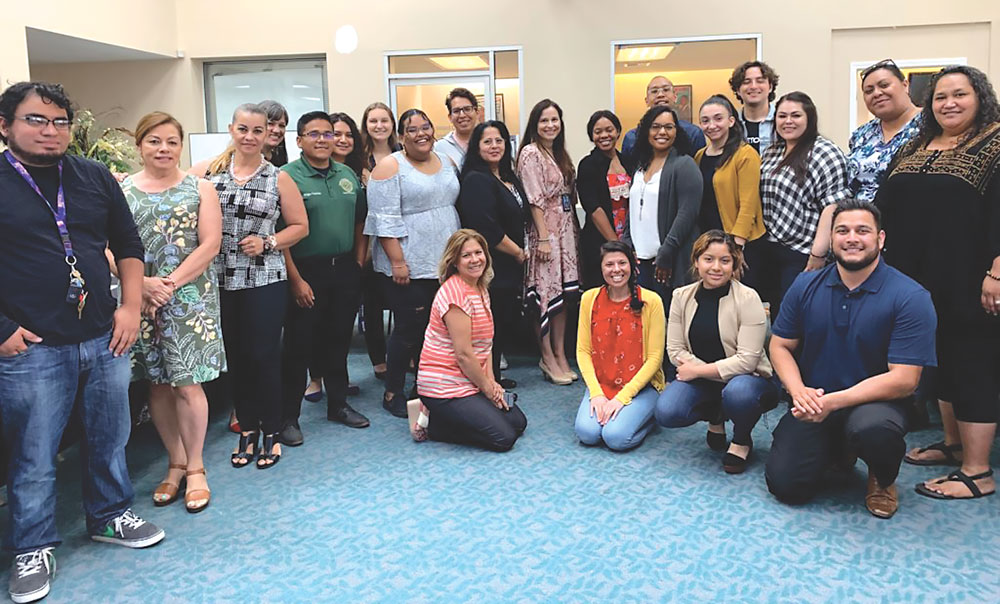
Case Study 2: Sheheryar Kaoosji, Warehouse Worker Resource Center (WWRC), Ontario, California
(Disclaimer: The author’s daughter volunteered briefly with the organization in May 2020.)
Personal Journey
“I’m the executive director of WWRC,” says Sheheryar Kaoosji, “a cofounder with Veronica Alvarado, our deputy director. We filed incorporation in 2011, but didn’t scale up until 2014.
“I began working in nonprofit organizations after I was involved as a student organizer at UC Santa Cruz in the mid-1990s, during a time of backlash toward people of color. First, I focused on communities fighting displacement and gentrification in the Mission District in San Francisco, through research and policy work supporting organizing. I also worked with the UCLA Labor Center, organizing workers and doing research in the disadvantaged parts of California. I learned about farmworkers and food processing, and worked on a campaign in the Inland Empire, organizing warehouse workers, which led to setting up WWRC.”
About Warehouse Worker Resource Center
“Our work is about the nexus between the community and workers, to hold big companies like Amazon to account, [in terms of] the way they impact the broader community. We organize insecure or part-time workers, such as drivers and warehouse workers in the logistics industry, through advocacy and action that improve conditions. We fight [for workers claiming] wage theft, [for worker] health and safety, and we engage the media [in our efforts].
Sign up for our free newsletters
Subscribe to NPQ's newsletters to have our top stories delivered directly to your inbox.
By signing up, you agree to our privacy policy and terms of use, and to receive messages from NPQ and our partners.
“Amazon is rocketing into the stratosphere, consolidating its power; yet workers are not stable; [all is] at the whim of the company, with no predictability. The state agency that oversees worker safety has been systematically dismantled [over the past] fifty years. Workers need us, because even in the agency’s best moments, they’re not particularly effective. Our biggest impact is to help workers through developing a model appropriate to the Inland Empire and the sector.
“We feel that we’re in the right place, holding the perspective of cross-issue solidarity, building something to last for the long term. Workers all stand together to improve conditions. We are also standing on the shoulders of people who organized here autonomously, and across the world. We learn from them and listen to the workers we organize.”
Transparency
“We’re still figuring it out, think we can do it better. Most of our staff are new—we grew from four to nineteen in a year, so we haven’t had a culture for long, creating official and unofficial systems to meet different needs.
“We make sure our staff understand how we make decisions, have clarity on which ones staff control. Staff had a voice in how we set our COVID-19 prevention policy. It’s an ongoing process, where we check in to see if it’s working. We meet every day at nine a.m., offer multiple ways to raise issues, and will create more vehicles for our staff to have a say.
“We operate the Justice HUB, shared with several community organizations.2 We coordinate with them and our staff in COVID-19 to make sure they have a safe workplace. We figured out together what we can do at home. We responded to the demand for our services because, in COVID-19, rules were not written, and hundreds of workers called us and asked. We are clear about the need to protect our own workers.”
Staff Support
“Our senior staff are refugees from labor unions and nonprofits with toxic work environments. We consider ourselves part of the labor movement, and must have good working conditions. Though our pay is not as good as the unions with pensions, we protect and support our staff, and intentionally create evolutionary and supportive space to keep staff.
“Organizers tend to work long hours. We organize low-wage workers and [otherwise economically disadvantaged] people, who work longer hours than anyone. That’s unsustainable for everyone. Because there’s an infinite amount of work, we must balance a strong work ethic with rest. We make sure people are taking breaks and finding space to regenerate.
“We communicate constantly about where we are and what we are doing. We work really hard, because [it is] our privilege to work at a place that pays a decent wage. If things are great, sometimes we work eighty hours a week. There’s an ebb and flow to our work, and we can’t go hard every day, so we rest when we can. The pace forces us to be flexible. That’s the way the movement goes—it’s broader than just a job.”
Addressing the Middle Gap
“Across labor organizations, we have a middle gap. The senior people in leadership tend to be locked in, with a lot of young people coming into the movement. They can do organizing for a while and burn out if they don’t see an opportunity to move up. And there’s a bit of brain drain of folks leaving the Inland Empire for better opportunities.
“We established a tight wage scale, where the chief executive is not making more than double the entry-level person, to provide enough for entry- and mid-level workers. They might be in their thirties, have a kid. We need more workers, and the middle tier is the greatest problem. We pay well compared to some nonprofits—make up for wages with other things, like decent healthcare with family coverage, and a 403(b) plan. The overtime rule sets the base, so we have to do $50,000 a year or better.”3
Being a Part of the Labor Movement with Immigrant Roots
“We are organizers and campaigners. A lot of us are children of immigrants, first in the family to go to college. We have had personal experiences comparable to the workers we organize. Our staff want to change conditions that their parents went through—[they] have the heart and drive plus the brain.
“People have ambitions. I was born in 1977, at a cusp of my generation. Younger people are much more radical, still figuring out what they want. They don’t expect to work at one place for very long, but we want to keep people five to ten years, to have a workplace of rigorous program quality. People should get a say in how their work plays out. Our staff talk with people all day. We constantly ask, ‘What did we learn?’—to jointly make meaning of what we’re hearing, so we can take effective action.”
Cultural Awareness in the Movement
“We are building a culture of accomplishment and focus on fighting [powerful corporations]. People get gratification from [this] work. We help people to see that it is very important, and we want to win. It has to be a fit.
“We want to see that they’re staying in the movement or in the region. We care about that. I worked for LAANE [Los Angeles Alliance for a New Economy], a nonprofit [that’s been] around for twenty-five years, where I learned what to do and what not to do. I think they set up a primarily feminist culture, and some of their staff have been there for twenty years. Black Lives Matter, as a movement, is primarily women-led. They seem to process internal tumult differently compared to other movements.
“The majority of our staff are women. Veronica has led on our culture. [We know to pay attention to culture because] some unions self-destructed. We have a traditional hierarchical structure. The leadership sets objectives. We figure out how we get there together, with everyone.”

Case Study 3: Ananda Valenzuela, RVC, Seattle, Washington
Personal Journey
“I’m the interim executive director of RVC [formerly Rainier Valley Corps],” says Ananda Valenzuela. “Having grown up in Puerto Rico, I know what it’s like to live in a modern-day colony, with politics far more corrupt than what we’re used to here. And it was also a very diverse place, with folks from different backgrounds, which inspired me to get involved in work that centers equity—putting power in the hands of those most impacted by inequitable systems.
“I think of nonprofits as a vehicle for change. Good capacity building can have a multiplying effect, fueling leaderful networks, a concept championed by Change Elemental.4 The work will take many [acting] from different angles. This thinking brought me to my current role.”
About RVC
“RVC is a capacity-building organization both led by and serving people of color in the greater Seattle area. We do capacity building for forty partner organizations. Our approach is described in a Stanford Social Innovation Review article [by April Nishimura et al.] about transformational capacity building.”5
Transparency
“Transparency is core to our work, because integrity and transformation are core values for us. In order to be a learning organization,6 we have to be able to know and share information. When information gets stuck and doesn’t flow freely, we can’t make good decisions—like the concept from family systems theory of secrets being like plaque in your arteries.7
“Transparency also has a deeper meaning for us, because we have a distributed leadership structure.8 For people on the front lines to make good decisions, we need to have transparency.
“There’s always complexity. We hold the value of transparency in balance with trust. Someone from a partner organization might share something with an RVC staff member that they may not want shared with anyone else. We hold our trust with partners sacred, and support our partners in understanding how we operate, so that they can trust a staff person to hold their information securely.”
Staff Support
“By centering wellness, we aspire to give our staff a sense of safety and a deep acknowledgment that we care about staff as whole beings. We make sure to provide good healthcare that covers therapy costs, and we take extra steps when things are hard—like hiring an art therapist to work with staff individually soon after the [COVID-19] quarantine began. This is our whole-human approach to work9—meaning when staff walk into our workspace, they don’t have to hide any aspect of their identity.
“In this moment, our communities are dealing with multiple crises, such as the continued murders of Black people at the hands of police; immigrants and refugees inhumanely imprisoned; and a crumbling economy. There are so many intersecting issues of safety and wellness for people of color. We are trying to take a holistic approach.
“Another example is our flexible paid time off policy, offering twenty-three days of paid time off a year that staff can use however they wish. We also make sure to pay a living wage, not a minimum wage, and offer extensive benefits with a $0 deductible healthcare plan. Centering staff wellness results in different decisions. We are also constantly doing internal equity work; for example, we are currently focusing on how we center Blackness. No matter who you are in the world, there’s always more work to be done around equity and inclusion.”
…
The three EDs’ reflections share the following characteristics:
- A mindset that achieving a worthwhile objective is a continual journey;
- Understanding that awareness of culture is a key element of rigorous program operations;
- Orientation toward being a workplace that addresses compensation, benefits, and everything that affects morale;
- Desire to be in mutuality with their staff, who are whole beings at work; and
- Evolutionary approach to supporting staff during a national health and economic emergency.
The EDs back up the common acknowledgment that staff make mission possible, by asking themselves if how they treat their staff aligns with their values. They want to figure out what a good workplace looks like—not just for but with their staff. Most remarkably, the lens they use, of “modeling organizational values with staff,” authenticates their approach to achieving social missions.
Lisa Cuestas deserves special mention for her (and Casa Familiar’s) modeling of transparency and vulnerability in voicing regrets about past practices and willingness to make amends by putting their money where their mouth is, so to speak, during the COVID-19 pandemic. Such decisions based in truthfulness build bonds based in trust, and strengthen internal culture.
All three EDs believe that centering staff is not just good for business but also integral to achieving their organizations’ missions. This stance seems especially vital when all of us are individually trying to stay healthy, and when taking care of our families and communities is our highest priority. Our professional and personal lives merged in 2020, refusing to maintain the separation imposed by most workplace cultures. These case studies demonstrate that practicing an organization’s values with transparency and in wholeness vis-à-vis staff is a viable approach for nonprofits—or any institution—to keep evolving amid the existential challenges of our time.
Notes
- National Council of Nonprofits, “Financial Transparency.”
- Justice HUB is “a co-operative space where eight worker rights, immigrant rights and community organizations have joined together to create a safe community and organizing space in the Inland region”—see the Warehouse Workers Resource Center.
- The minimum exempt salary is $49,920 per year for employers of twenty-five or fewer employees. See Aaron N. Colby and Marissa Franco, “California’s 2020 Minimum Wage Increase to Affect Exempt and Nonexempt Employees,” Davis Wright Tremaine LLP (blog), June 30, 2020.
- Change Elemental, “Our Approach.”
- April Nishimura et al., “Transformational Capacity Building,” Stanford Social Innovation Review 18, no. 4 (Fall 2020): 29–37.
- Peter M. Senge, The Fifth Discipline: The Art & Practice of the Learning Organization (New York: Doubleday, 1990), 14.
- Dan Zink and Covenant Theological Seminary, “Family Systems Theory,” lesson 10 in The Gospel Coalition course, Marriage and Family Counseling: A Survey of Biblical, Conceptual, and Practical Issues Involved in Marriage and Family Counseling for Pastors and Ministry Leaders (n.p.: The Gospel Coalition, Summer 2008).
- RVC, Changemakers Blog, Community Relations, “Update! RVC is in the middle of a leadership transition AND an organizational transition,” by Ananda Valenzuela, March 6, 2020.
- See Chapter 2.4, “Striving for wholeness (general practices),” in Frederic Laloux, Reinventing Organizations: A Guide to Creating Organizations Inspired by the Next Stage of Human Consciousness (Brussels: Nelson Parker, 2014), 143–72.









